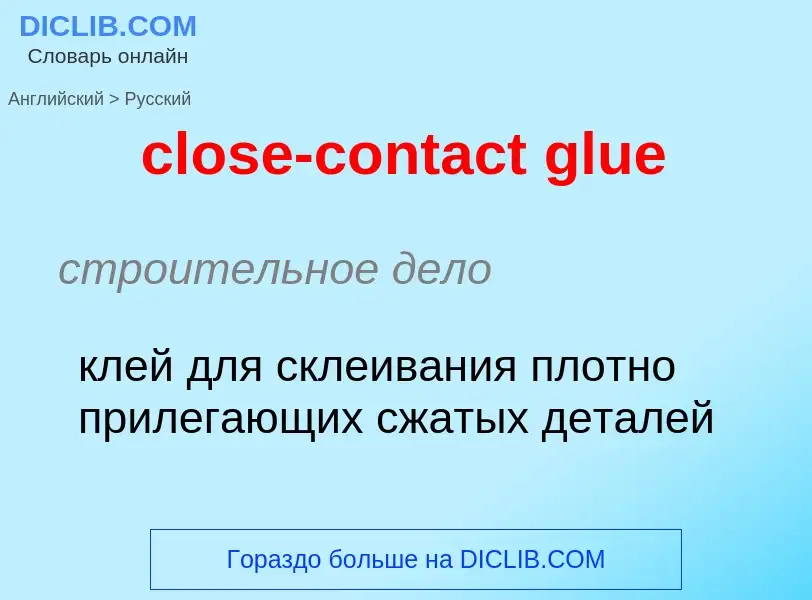Translation and analysis of words by ChatGPT artificial intelligence
On this page you can get a detailed analysis of a word or phrase, produced by the best artificial intelligence technology to date:
- how the word is used
- frequency of use
- it is used more often in oral or written speech
- word translation options
- usage examples (several phrases with translation)
- etymology
close-contact glue - translation to russian
строительное дело
клей для склеивания плотно прилегающих сжатых деталей
общая лексика
костяной клей
строительное дело
костный клей
Definition
Wikipedia

Adhesive, also known as glue, cement, mucilage, or paste, is any non-metallic substance applied to one or both surfaces of two separate items that binds them together and resists their separation.
The use of adhesives offers certain advantages over other binding techniques such as sewing, mechanical fastenings, or welding. These include the ability to bind different materials together, the more efficient distribution of stress across a joint, the cost-effectiveness of an easily mechanized process, and greater flexibility in design. Disadvantages of adhesive use include decreased stability at high temperatures, relative weakness in bonding large objects with a small bonding surface area, and greater difficulty in separating objects during testing. Adhesives are typically organized by the method of adhesion followed by reactive or non-reactive, a term which refers to whether the adhesive chemically reacts in order to harden. Alternatively, they can be organized either by their starting physical phase or whether their raw stock is of natural or synthetic origin.
Adhesives may be found naturally or produced synthetically. The earliest human use of adhesive-like substances was approximately 200,000 years ago, when Neanderthals produced tar from the dry distillation of birch bark for use in binding stone tools to wooden handles. The first references to adhesives in literature appeared in approximately 2000 BC. The Greeks and Romans made great contributions to the development of adhesives. In Europe, glue was not widely used until the period AD 1500–1700. From then until the 1900s increases in adhesive use and discovery were relatively gradual. Only since the last century has the development of synthetic adhesives accelerated rapidly, and innovation in the field continues to the present.



![[[Casein glue]] preparation [[Casein glue]] preparation](https://commons.wikimedia.org/wiki/Special:FilePath/Casein glue preparation.jpg?width=200)
![A reconstruction of [[Ötzi]]'s axe, which used pitch as an adhesive A reconstruction of [[Ötzi]]'s axe, which used pitch as an adhesive](https://commons.wikimedia.org/wiki/Special:FilePath/ReconstructedOetziAxe.jpg?width=200)



![WW2 poster from the UK, noting the use of waste [[bone]]s in making glue. WW2 poster from the UK, noting the use of waste [[bone]]s in making glue.](https://commons.wikimedia.org/wiki/Special:FilePath/Bones Wanted Art.IWMPST14727.jpg?width=200)


